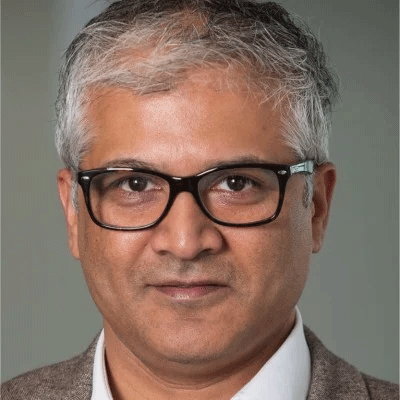Getting Started with Your EVH Journey

Peter Bhinda, SCP, is a highly skilled medical professional with over two decades of experience in vein harvesting. His career in this specialized field began in 2003, using various techniques. In 2009, Peter initiated endoscopic vessel harvesting, marking a significant advancement. Since then, he has successfully completed several hundred cases using the VirtuoSaph™ Plus Endoscopic Vessel Harvesting (EVH) system, showcasing his expertise and commitment to utilizing cutting-edge technology. Peter's proficiency extends beyond Endoscopic Vessel Harvesting (EVH), encompassing extensive expertise in Endoscopic Radial Artery Harvesting (ERAH). In April 2023, Peter joined the Terumo Clinical Specialists Team, where he continues to contribute his vast experience and knowledge.

Kimberly Wordekemper, MPAS, PA-C, is a Regional Surgery Clinical Specialist with Terumo Cardiovascular. She earned a Master’s Degree in Physician Assistant Studies from the University of Nebraska Medical Center. Kim has served as a PA for 17 years and has specialized in cardiothoracic surgery for 15 years. In this time she has completed approximately 3000 EVH procedures and approximately 100 ERAH procedures. Kim says she decided to specialize in cardiothoracic surgery because of her love for patients; she enjoys engaging with patients and their families throughout the surgical journey they take together. Kim has an independent and competitive personality which matches the passion required for a career in cardiothoracic surgery. Having the independence to perform an EVH or ERAH procedure challenges Kim to ensure every case is performed better than the last.
- Video Transcription
-
Can you explain the different steps of the Terumo training program that you utilize to help clinicians prepare for EVH?
Peter Bhinda: "To help with endoscopic vein harvesting using the VirtuoSaph Plus, we have standardized our training to create a more structured program. This program consists of four essential steps.
Step 1 is primarily didactic. You get to handle the VirtuoSap™ Plus EVH System, familiarize yourself with its various features, and understand its benefits. In Step 2, we move on to simulation training. We use a simulator called the Saphenous Vein Model, which is a synthetic plate with a vein embedded in it. We set this up in an environment that closely mimics an operating room, complete with an endoscopic tower and a generator. This setup allows you to practice extensively and become familiar with the VirtuoSaph™ Plus EVH System, moving from a theoretical understanding to hands-on practice.
In step 3, you enter the operating room. Here, you use a vein scanner for vein mapping, mark the appropriate leg for harvesting, and position the patient correctly. This prepares you for step 4, where you perform the actual procedure. In this step, you set up your tower and generator, ensuring everyone in the operating room is aware of the setup. Once the patient is prepped and draped, you begin the procedure, following step-by-step instructions for dissection and vein harvesting.
Using these four steps, we ensure that endoscopic vein harvesting is performed in a standardized and effective manner."
What training resources do you find most effective for new harvesters to overcome the EVH learning curve?
Peter Bhinda: "We have various tools to aid in this training, including the Saphenous Vein Model for simulation. This tool is crucial because it helps you develop muscle memory. By practicing with the VirtuoSaph™ Plus EVH System in a simulated environment, you become familiar with the feel of the instrument and can operate it without constantly looking down.
Another valuable tool is recording your cases. By reviewing these recordings, you can evaluate your performance, identify areas for improvement, and reinforce good practices. This review process is especially helpful in high-pressure, stressful environments where you might not always think clearly."Kimberly Wordekemper: The resources that I find most effective when training new clinicians are the "How To" videos. These videos provide short excerpts of an entire case with tips and highlights to overcome any issues that might require more information and training. They are an excellent resource when you're learning endoscopic vein harvesting (EVH).
If you could give one piece of advice to new clinicians preparing for EVH, what would it be?
Peter Bhinda:: For someone new to EVH, there is naturally a learning curve, just as with any surgical procedure. I would advise new clinicians to be patient. That's why we are here as proctors—to help you get over that learning curve with support for the case. Be patient, because you will get there.
Once we have trained you and then leave, feel confident in performing cases on your own. Many programs fail because, after the proctors leave, people stop doing cases, which leads to the loss of newly acquired skills. Therefore, continue performing cases to make sure you overcome that learning gap.
When selecting cases, choose the ones that are easier to manage initially. Avoid starting with very skinny legs or those with significant mobility or varicose veins, as these require advanced training. Choosing easier cases will help you navigate the learning curve more effectively."Kimberly Wordekemper: "The one piece of advice that I would give to new clinicians for them to be successful is to definitely do as many cases as you can. The more cases that you do, the better you're going to get and the more confident you'll become in the long run."

